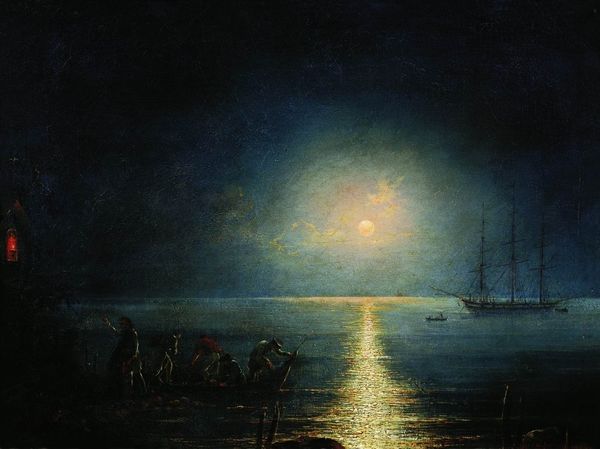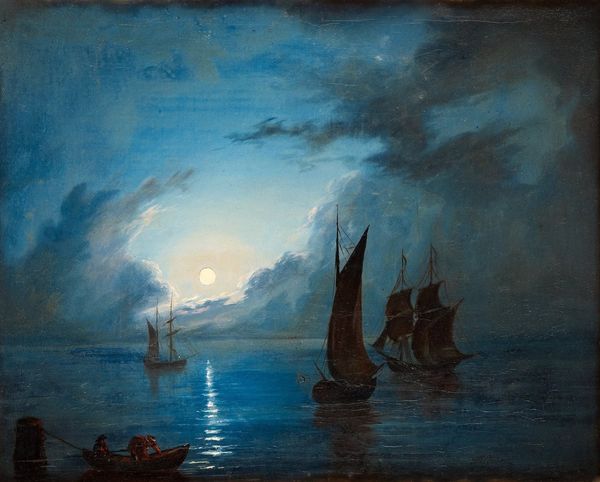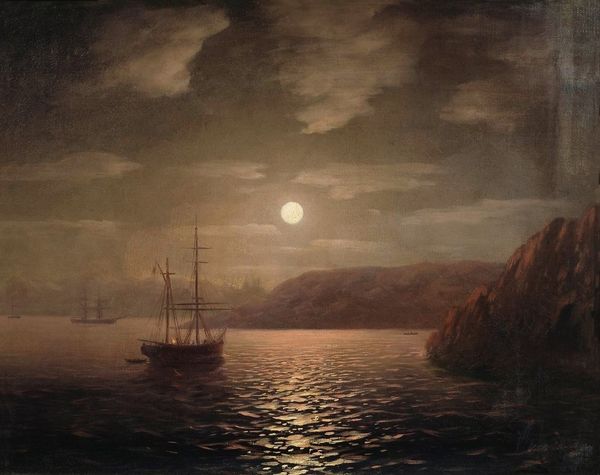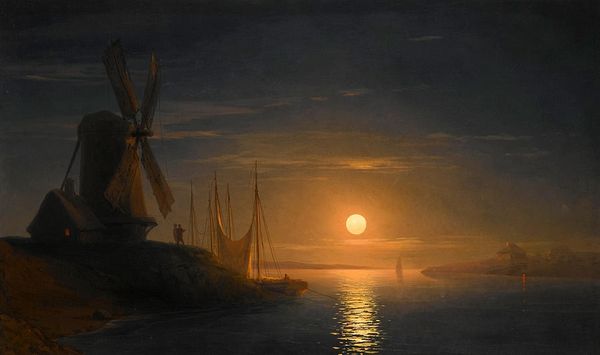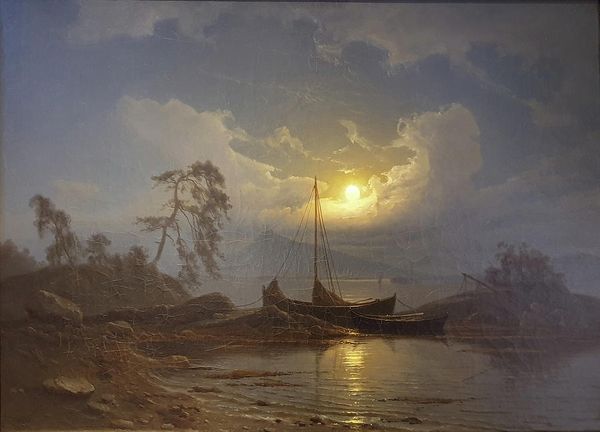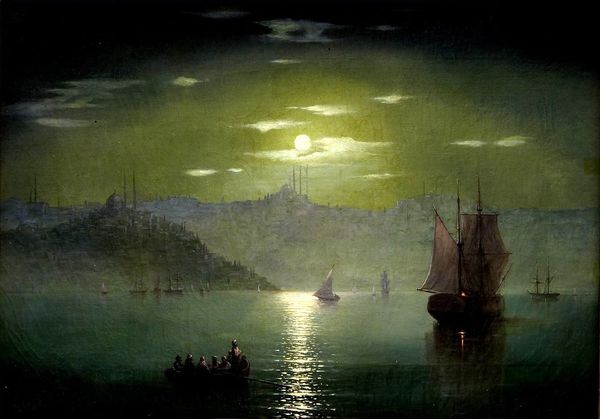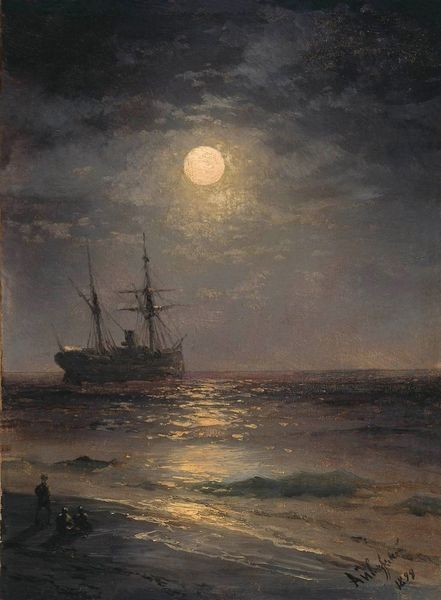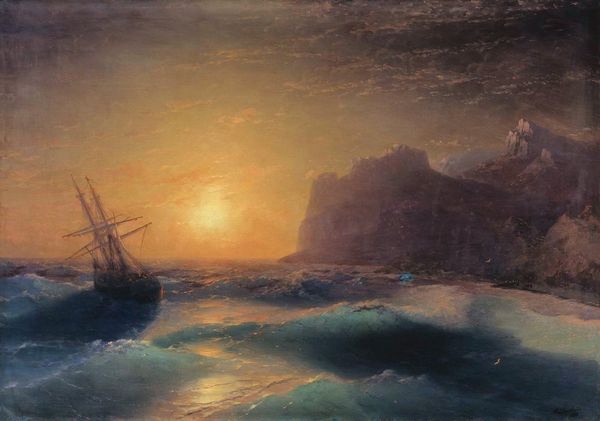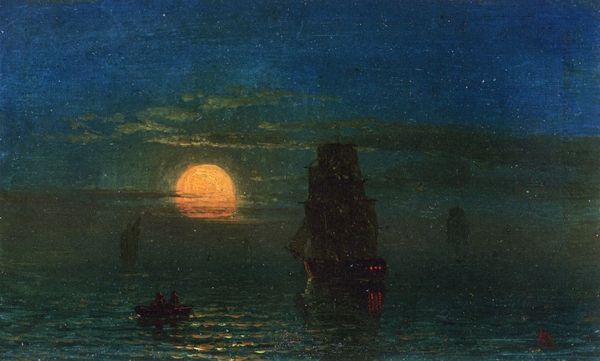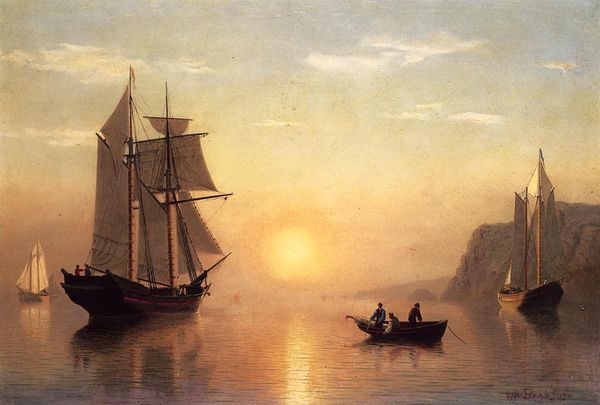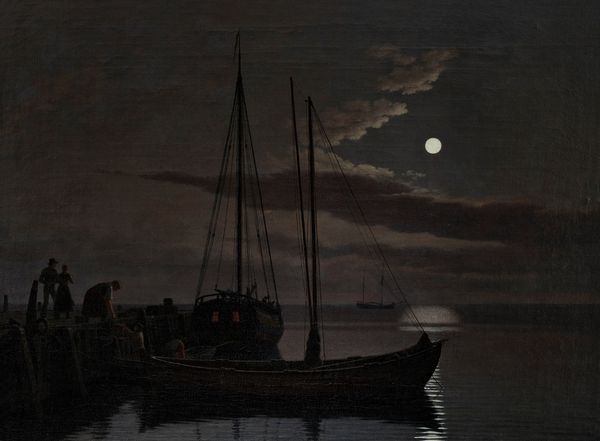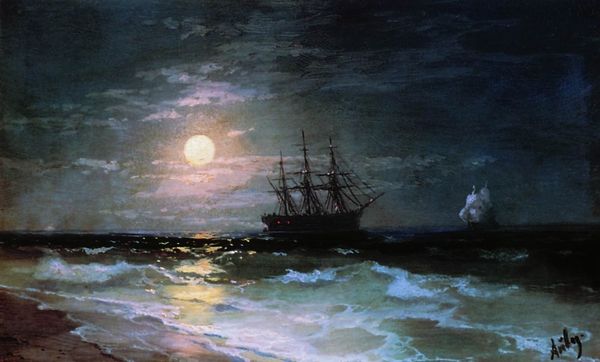
painting, oil-paint
#
boat
#
sky
#
fantasy art
#
painting
#
oil-paint
#
vehicle
#
landscape
#
figuration
#
romanticism
#
water
Copyright: Public domain
Editor: This is Marcus Larson's oil painting, "Nocturnal Voyage." The darkness broken by the moonlight creates a somewhat ominous mood, but I find the composition quite beautiful. What kind of stories do you think it tells? Curator: Looking at it historically, seascapes during the Romantic era were more than just pretty pictures; they reflected humanity's relationship with nature, and specifically with the sublime. Here, the bright moon highlights a small boat, dwarfed by the vast, dark sky. It's a pretty conventional composition, but note how the painting directs your eye – first to the luminescent moon and then to the small vessels down below. Do you think this sense of scale emphasizes a particular social position? Editor: Possibly. It makes me think about humanity’s vulnerability in the face of the natural world, perhaps suggesting our relative insignificance against the backdrop of the divine or the immensity of the ocean, something larger than one’s self. Curator: Precisely. Also consider the function of art during this period. Were such works, portraying man humbled, tools of a burgeoning bourgeoisie seeking to display not power but piety or aesthetic sensibility? In Larson’s depiction, there is no narrative scene here, nothing of real import taking place save nature's phenomena, lending the composition what I'd wager is a very "tasteful" appearance of nature. What do you make of the implied quiet of the scene? Editor: It’s quite meditative. The stillness of the water adds to that feeling. It makes me think about travel, maybe immigration, maybe loss... all common themes then and even more so today. Curator: An interesting connection. Larson’s focus aligns with a developing social sensitivity, a cultural investment in emotional response, particularly within landscape painting. The lack of dramatic narrative allows viewers to project their own emotions onto the scene, contributing to its appeal and, indeed, its social function as a source of individual reflection and, possibly, shared emotional experience within the exhibition space. Editor: I never considered the public role in something that appears so deeply personal, even dreamlike. Curator: That interplay, that’s where art history gets interesting. The intersection of private and public meaning. Thank you. Editor: Yes, definitely! Thanks for your insight!
Comments
No comments
Be the first to comment and join the conversation on the ultimate creative platform.
